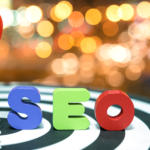Boost Conversion Rates With Landing Page Optimization
When it comes to driving conversions, a well-optimized landing page is crucial. Landing Pages serve as the gateway to converting visitors into leads or customers. By implementing effective Landing Page Optimization strategies, businesses can enhance user experience, increase engagement, and ultimately boost conversion rates.
In this article, we will explore key techniques and best practices for optimizing landing pages to maximize conversions.
I. Understand Your Target Audience:
Before diving into the optimization process, it is essential to have a clear understanding of your target audience. Research their demographics, preferences, pain points, and motivations.
This knowledge will help you create a landing page that resonates with your audience and addresses their specific needs.
II. Craft a Compelling Value Proposition:
The value proposition is the core message of your landing page. It should clearly communicate the unique benefits and value your product or service offers.
Make it concise, compelling, and prominently display it above the fold. A strong value proposition creates an immediate connection with visitors and entices them to explore further.
III. Design and Layout Optimization:
A visually appealing and well-structured design is crucial for landing page optimization. Consider the following elements:
A. Clear and Concise Headline: Craft a headline that grabs attention and aligns with your value proposition. Clearly communicate what visitors can expect from your offering.
B. Engaging Visuals: Incorporate relevant and high-quality visuals such as images, videos, or graphics that support your message and capture visitors’ interest.
C. Intuitive Navigation: Ensure the landing page is easy to navigate and understand. Use clear and visible call-to-action (CTA) buttons to guide visitors towards the desired action.
D. Responsive Design: Optimize your landing page for different devices and screen sizes. Responsive design ensures a seamless user experience across desktop, mobile, and tablet devices.
IV. Compelling and Persuasive Copy:
The copy on your landing page plays a crucial role in convincing visitors to take action.
Follow these guidelines:
A. Clear and Benefit-Oriented Messaging: Clearly communicate the benefits visitors will gain by engaging with your offering. Highlight how your product or service solves their pain points or fulfills their needs.
B. Use Persuasive Language: Use persuasive language to engage visitors and create a sense of urgency. Employ techniques such as storytelling, social proof, and compelling statistics to build trust and credibility.
C. Concise and Scannable Format: Break the copy into short paragraphs, bullet points, and subheadings to make it easier to read and digest. Visitors should be able to quickly grasp the key points.
V. Strong Call-to-Action (CTA):
The CTA is the crucial element that drives conversions. Ensure your CTA stands out, clearly communicates the desired action, and creates a sense of urgency. Use action-oriented words and place the CTA prominently on the page.
VI. A/B Testing and Optimization:
To further improve your landing page’s performance, conduct A/B tests to compare different variations of elements such as headlines, visuals, copy, and CTAs.
Test one element at a time and analyze the results to identify the most effective combination. Continuously optimize your landing page based on data-driven insights.
VII. Incorporate Trust Elements:
Building trust is vital for increasing conversions. Consider including the following trust elements on your landing page:
A. Customer Testimonials and Reviews: Display testimonials or reviews from satisfied customers to instill confidence in your offering.
B. Trust Seals and Certifications: If applicable, showcase relevant trust seals, certifications, or industry affiliations to demonstrate credibility and security.
C. Privacy and Security Assurances: Clearly communicate your commitment to data privacy and security. Display trust badges or mention secure payment options if applicable.
VIII. Track and Analyze Performance:
To measure the effectiveness of your landing page optimization efforts, it’s crucial to track and analyze key performance metrics. Here are some important metrics to monitor:
A. Conversion Rate: Track the percentage of visitors who take the desired action on your landing page, such as filling out a form, making a purchase, or downloading content.
B. Bounce Rate: Measure the percentage of visitors who leave your landing page without taking any action. A high bounce rate may indicate issues with your page’s design or messaging.
C. Time on Page: Analyze how much time visitors spend on your landing page. Longer average time on page indicates higher engagement and interest.
D. Click-through Rate (CTR): If you’re running paid ads that lead to your landing page, track the CTR to gauge the effectiveness of your ad copy and visuals.
E. Conversion Funnel: Monitor the performance of each step in your conversion funnel to identify potential bottlenecks or areas for improvement.
Use analytics tools like Google Analytics or the tracking capabilities provided by your landing page platform to gather data on these metrics. Regularly review the data and identify trends, patterns, or areas that require optimization.
IX. Continuous Optimization:
Landing page optimization is an ongoing process. Even if your landing page is performing well, there is always room for improvement. Consider the following strategies for continuous optimization:
A. Iterate and Test: Continuously test and iterate different elements of your landing page, such as headlines, CTAs, visuals, and copy. A/B testing helps identify what resonates best with your audience and can lead to significant improvements in conversion rates.
B. User Feedback: Gather feedback from users through surveys, user testing, or feedback forms. Use this feedback to identify pain points or areas of confusion and make adjustments accordingly.
C. Data-Driven Decision Making: Base your optimization efforts on data and insights from analytics tools. Analyze user behavior, conversion rates, and other relevant metrics to inform your decision-making process.
D. Stay Updated with Industry Trends: Keep up with the latest industry trends and best practices in landing page optimization. Experiment with new techniques and strategies to stay ahead of the curve.
Conclusion:
Landing page optimization is a critical component of driving conversions and maximizing the ROI of your marketing efforts. By understanding your target audience, crafting compelling value propositions, optimizing design and layout, creating persuasive copy, incorporating strong CTAs, and continuously testing and optimizing, you can improve your landing page’s performance and boost conversion rates.
Regularly track and analyze performance metrics, gather user feedback, and make data-driven decisions to refine and optimize your landing page over time. With a well-optimized landing page, you can increase engagement, generate more leads, and drive greater success in your marketing campaigns.







